Logitech 2014 Annual Report Download - page 280
Download and view the complete annual report
Please find page 280 of the 2014 Logitech annual report below. You can navigate through the pages in the report by either clicking on the pages listed below, or by using the keyword search tool below to find specific information within the annual report.-
 1
1 -
 2
2 -
 3
3 -
 4
4 -
 5
5 -
 6
6 -
 7
7 -
 8
8 -
 9
9 -
 10
10 -
 11
11 -
 12
12 -
 13
13 -
 14
14 -
 15
15 -
 16
16 -
 17
17 -
 18
18 -
 19
19 -
 20
20 -
 21
21 -
 22
22 -
 23
23 -
 24
24 -
 25
25 -
 26
26 -
 27
27 -
 28
28 -
 29
29 -
 30
30 -
 31
31 -
 32
32 -
 33
33 -
 34
34 -
 35
35 -
 36
36 -
 37
37 -
 38
38 -
 39
39 -
 40
40 -
 41
41 -
 42
42 -
 43
43 -
 44
44 -
 45
45 -
 46
46 -
 47
47 -
 48
48 -
 49
49 -
 50
50 -
 51
51 -
 52
52 -
 53
53 -
 54
54 -
 55
55 -
 56
56 -
 57
57 -
 58
58 -
 59
59 -
 60
60 -
 61
61 -
 62
62 -
 63
63 -
 64
64 -
 65
65 -
 66
66 -
 67
67 -
 68
68 -
 69
69 -
 70
70 -
 71
71 -
 72
72 -
 73
73 -
 74
74 -
 75
75 -
 76
76 -
 77
77 -
 78
78 -
 79
79 -
 80
80 -
 81
81 -
 82
82 -
 83
83 -
 84
84 -
 85
85 -
 86
86 -
 87
87 -
 88
88 -
 89
89 -
 90
90 -
 91
91 -
 92
92 -
 93
93 -
 94
94 -
 95
95 -
 96
96 -
 97
97 -
 98
98 -
 99
99 -
 100
100 -
 101
101 -
 102
102 -
 103
103 -
 104
104 -
 105
105 -
 106
106 -
 107
107 -
 108
108 -
 109
109 -
 110
110 -
 111
111 -
 112
112 -
 113
113 -
 114
114 -
 115
115 -
 116
116 -
 117
117 -
 118
118 -
 119
119 -
 120
120 -
 121
121 -
 122
122 -
 123
123 -
 124
124 -
 125
125 -
 126
126 -
 127
127 -
 128
128 -
 129
129 -
 130
130 -
 131
131 -
 132
132 -
 133
133 -
 134
134 -
 135
135 -
 136
136 -
 137
137 -
 138
138 -
 139
139 -
 140
140 -
 141
141 -
 142
142 -
 143
143 -
 144
144 -
 145
145 -
 146
146 -
 147
147 -
 148
148 -
 149
149 -
 150
150 -
 151
151 -
 152
152 -
 153
153 -
 154
154 -
 155
155 -
 156
156 -
 157
157 -
 158
158 -
 159
159 -
 160
160 -
 161
161 -
 162
162 -
 163
163 -
 164
164 -
 165
165 -
 166
166 -
 167
167 -
 168
168 -
 169
169 -
 170
170 -
 171
171 -
 172
172 -
 173
173 -
 174
174 -
 175
175 -
 176
176 -
 177
177 -
 178
178 -
 179
179 -
 180
180 -
 181
181 -
 182
182 -
 183
183 -
 184
184 -
 185
185 -
 186
186 -
 187
187 -
 188
188 -
 189
189 -
 190
190 -
 191
191 -
 192
192 -
 193
193 -
 194
194 -
 195
195 -
 196
196 -
 197
197 -
 198
198 -
 199
199 -
 200
200 -
 201
201 -
 202
202 -
 203
203 -
 204
204 -
 205
205 -
 206
206 -
 207
207 -
 208
208 -
 209
209 -
 210
210 -
 211
211 -
 212
212 -
 213
213 -
 214
214 -
 215
215 -
 216
216 -
 217
217 -
 218
218 -
 219
219 -
 220
220 -
 221
221 -
 222
222 -
 223
223 -
 224
224 -
 225
225 -
 226
226 -
 227
227 -
 228
228 -
 229
229 -
 230
230 -
 231
231 -
 232
232 -
 233
233 -
 234
234 -
 235
235 -
 236
236 -
 237
237 -
 238
238 -
 239
239 -
 240
240 -
 241
241 -
 242
242 -
 243
243 -
 244
244 -
 245
245 -
 246
246 -
 247
247 -
 248
248 -
 249
249 -
 250
250 -
 251
251 -
 252
252 -
 253
253 -
 254
254 -
 255
255 -
 256
256 -
 257
257 -
 258
258 -
 259
259 -
 260
260 -
 261
261 -
 262
262 -
 263
263 -
 264
264 -
 265
265 -
 266
266 -
 267
267 -
 268
268 -
 269
269 -
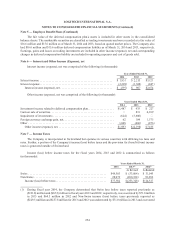 270
270 -
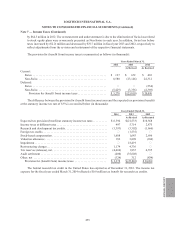 271
271 -
 272
272 -
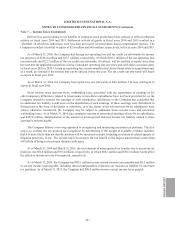 273
273 -
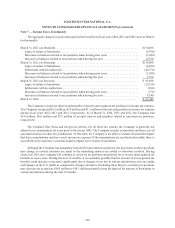 274
274 -
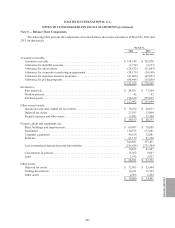 275
275 -
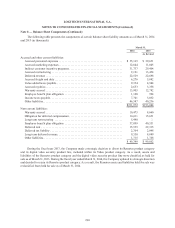 276
276 -
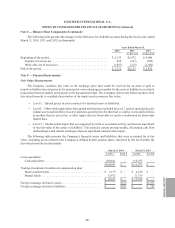 277
277 -
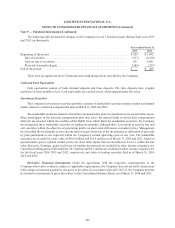 278
278 -
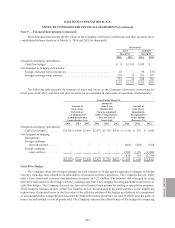 279
279 -
 280
280 -
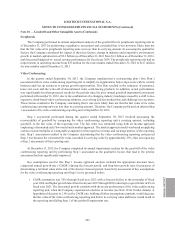 281
281 -
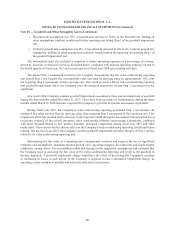 282
282 -
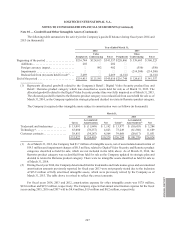 283
283 -
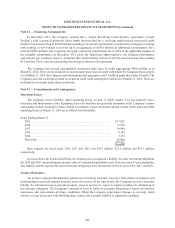 284
284 -
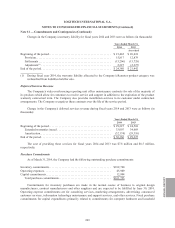 285
285 -
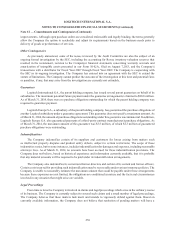 286
286 -
 287
287 -
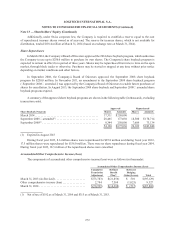 288
288 -
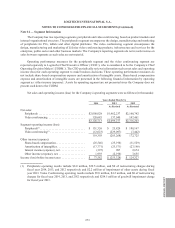 289
289 -
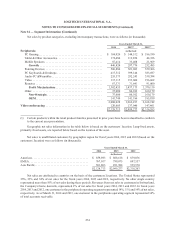 290
290 -
 291
291 -
 292
292 -
 293
293 -
 294
294 -
 295
295 -
 296
296 -
 297
297 -
 298
298 -
 299
299 -
 300
300 -
 301
301 -
 302
302 -
 303
303 -
 304
304 -
 305
305 -
 306
306 -
 307
307 -
 308
308
 |
 |
LOGITECH INTERNATIONAL S.A.
NOTES TO CONSOLIDATED FINANCIAL STATEMENTS (Continued)
changes in the spot rate of the currency underlying the forward contract with changes in the spot rate of the currency
in which the forecasted transaction will be consummated. If the underlying transaction being hedged fails to occur
or if a portion of the hedge does not generate offsetting changes in the foreign currency exposure of forecasted
inventory purchases, the Company immediately recognizes the gain or loss on the associated financial instrument
in other income (expense), net. Such gains and losses were not material during fiscal years 2014, 2013 and 2012.
Cash flows from such hedges are classified as operating activities in the Consolidated Statements of Cash Flows.
As of March 31, 2014 and 2013, the notional amounts of foreign exchange forward contracts outstanding related to
forecasted inventory purchases were $51.8 million (€37.6 million), and $38.5 million (€30.1 million), respectively.
Foreign Exchange Forward and Swap Contracts
The Company also enters into foreign exchange forward contracts to reduce the short-term effects of foreign
currency fluctuations on certain foreign currency receivables or payables. These forward contracts generally
mature within three months. The Company may also enter into foreign exchange swap contracts to economically
extend the terms of its foreign exchange forward contracts. The primary risk managed by using forward and swap
contracts is the foreign currency exchange rate risk. The gains or losses on foreign exchange forward contracts are
recognized in other income (expense), net based on the changes in fair value.
The notional amounts of foreign exchange forward contracts outstanding as of March 31, 2014 and 2013
relating to foreign currency receivables or payables were $23.2 million and $14.2 million, respectively. Open
forward contracts as of March 31, 2014 and 2013 consisted of contracts in U.S. Dollars to purchase Taiwanese
Dollars and contracts in Euros to sell British Pounds at future dates at pre-determined exchange rates. The notional
amounts of foreign exchange swap contracts outstanding as of March 31, 2014 and 2013 were $30.5 million and
$19.6 million, respectively. Swap contracts outstanding as of March 31, 2014 and 2013 consisted of contracts in
Mexican Pesos, Japanese Yen and Australian Dollars.
The fair value of all foreign exchange forward contracts and foreign exchange swap contracts is determined
based on observable market transactions of spot currency rates and forward rates. Cash flows from these contracts
are classified as operating activities in the Consolidated Statements of Cash Flows.
Note 10 — Goodwill and Other Intangible Assets
Annual Goodwill Impairment Testing
In accordance with ASC Topic 350-10 (“ASC 350-10”) as it relates to Goodwill and Other Intangible Assets,
the Company conducts a goodwill impairment analysis annually at December 31 and as necessary if changes in
facts and circumstances indicate that it is more likely than not that the fair value of the Company’s reporting units
may be less than its carrying amount.
FASB ASC 350-20 permits an entity to make a qualitative assessment of whether it is more likely than not that
a reporting unit’s fair value is less than its carrying amount before applying the two-step goodwill impairment test.
If an entity concludes that it is not more likely than not that the fair value of a reporting unit is less than its carrying
amount, it would not be required to perform the two-step impairment test for that reporting unit.
Note 9 — Financial Instruments (Continued)
264
